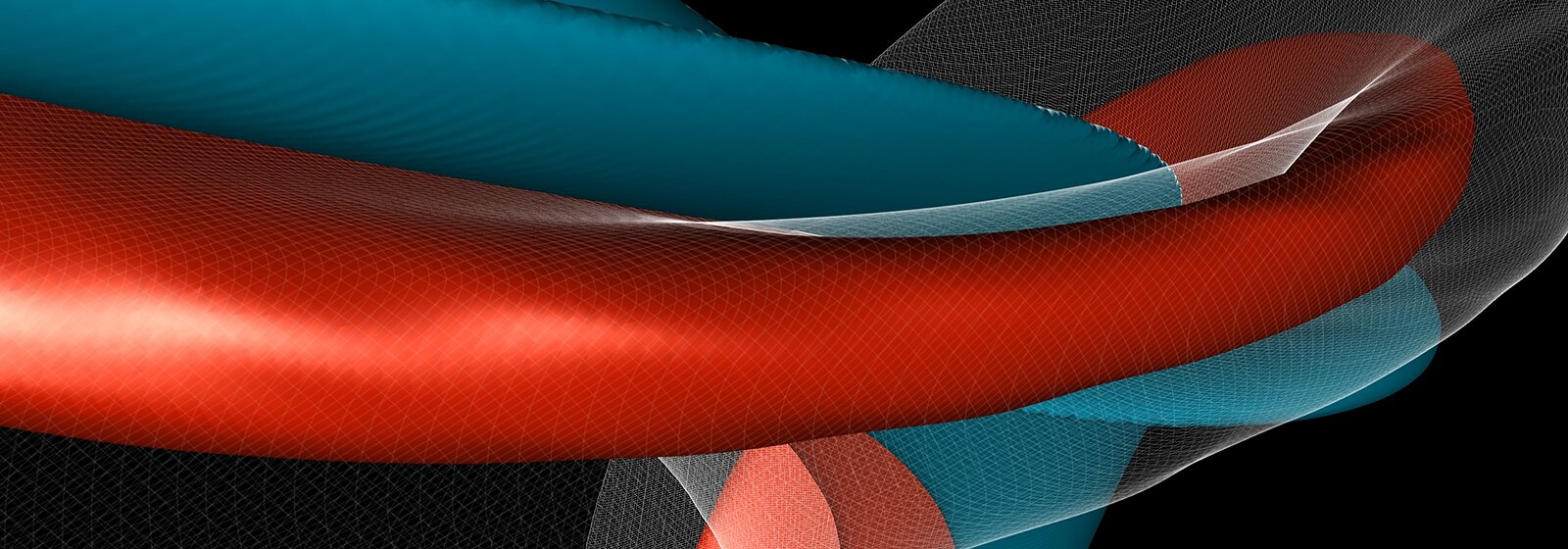November 11, 2020 - by Santina Russo
Today, many research advances in medicine, life science or high-density physics are achieved thanks to the most powerful light sources on the planet, namely synchrotrons and free electron lasers such as the SwissFEL X-ray free electron laser at the Paul Scherrer Institute in Switzerland. Free electron laser facilities are putting a lot of effort in creating and using a type of enhanced radiation known as superradiance. The term denotes intense, coherent radiation — coherent meaning that the frequency and phase of the waves constituting the radiation are identical. These sharp bursts of electromagnetic light can benefit various fields of research. In the life sciences, for example, short light bursts are needed to resolve small time scales, and certain fields of physics require very strong radiation. However, creating superradiance has proven to be extremely tricky — so far.
Now, with simulations performed on the “Piz Daint” supercomputer at CSCS, a team of scientists at the Instituto Superior Técnico in Lisbon, Portugal, has downright revolutionised the physical concept of superradiance by proposing a new, more accessible way to produce this valuable radiation. The results, which were recently published in Nature Physics, lay the groundwork for further computational and experimental investigation as well as applications in a number of scientific fields.
Expanding the superradiance regime
Like other forms of radiation, superradiance can occur when gases or charged particles such as electrons are temporarily excited by light and then re-emit radiation upon returning to their ground states. However, in order to create this especially intense light beam, the radiating electrons need to be packed densely together. Specifically, the average distance between the particles has to be much lower than the wavelength of the radiated light. This is a fundamental constraint for superradiance to arise — or so it was thought — and difficult to achieve.
“Even with very powerful magnets, it is extremely challenging to manoeuvre electrons travelling nearly at the speed of light to compress them in a sufficiently dense manner”, explains Jorge Vieira, a professor in plasma physics at Técnico and lead author of the paper. He and his co-workers therefore set out to find a way to create superradiance without having to satisfy these stringent conditions.
The scientists had first discovered this novel superradiance regime by analysing different plasma accelerators. Such devices accelerate electrons by using the electric field associated with an electron plasma wave that is excited by laser pulses or electron bunches. In the plasma wave, the team observed a peculiar behaviour, a kind of coherent motion that made it appear as though the accelerated electrons would sometimes travel faster than the speed of light. Such a behaviour is of course physically impossible when considering a single electron and only becomes apparent as a collective effect, similar to a “la ola” in a football stadium where the individuals forming it only move up and down, but, as a collective make the wave move forward. This superluminal effect — superluminal meaning an apparently faster-than-light speed — leads to a sort of shock wave of intense coherent radiation at a specific beam angle: that is, superradiance. From this observation, Vieira and his co-workers hypothesized that it should be possible to induce superradiance deliberately by causing such collective superluminal motions in charged particles.
Generalised superradiance: easier to achieve in practice
The team was indeed able to derive the corresponding mathematical concept of this “generalised superradiance”, which they subsequently tested with numerical simulations of high energy electrons performed on “Piz Daint”. They employed the so-called particle in cell technique using the Osiris code — a first principle calculation that allows the scientists to capture the dynamics of charged particles and the electrical field that they create. To this model, the team coupled a radiation emission code named RaDiO (Radiation Diagnostic for Osiris). The computing load of these coupled simulations was orders of magnitude higher than usual in plasma simulations, which was necessary to accurately capture the radiation emission at very high frequencies.
“In fact, we found conditions in which superradiance can be created even with electrons that are arbitrarily spaced”, says Vieira. All that is needed, according to the findings, is a certain modulation of the electrons before they enter the undulator. Undulators are devices in synchrotrons and free electron lasers that induce the particles to emit radiation and produce light beams. If the electrons are spatially modulated by large magnets such as those of a free electron laser — meaning wiggled in their wave motion in a certain manner — before entering an undulator, this influences their injection point and angle into the device. As a result, superradiance occurs.
This finding is extremely useful because it relaxes the demands on the electron beam properties in free electron lasers. “We expect that it will be much easier to achieve superradiance by this newly found beam modulation than by the conventional way of trying to reduce the distance between electron bunches”, says Vieira. What is more, with their work, the scientists have generalised a concept so fundamental that it may well influence a variety of scientific fields where superradiance already plays a role, like quantum mechanics, quantum optics or astrophysics.
Towards plasma accelerators
The team is now working on verifying the concept experimentally. “We are defining a strategy for an experimental demonstration and establishing cooperations with experimental specialists”, Vieira recounts. “It will be thrilling to observe generalised superradiance in reality, to examine how it will interact with matter and how we can exploit it to design novel experiments and gain new information.”
Simultaneously, the scientists are also working on transferring the new superradiance regime to plasma accelerators. These devices have a major advantage compared to conventional devices used to accelerate and steer particles: They are much smaller and therefore offer the possibility to construct very compact, even bench-sized light sources. However, until now, the quality and intensity of such plasma generated radiation was much lower than the light beams generated by conventional particle accelerators. “Superradiance has the potential to change that”, Vieira points out. If superradiance could be generated experimentally in plasma accelerators, this would allow for intense and compact X-ray sources, such as bench-sized free electron lasers or devices for cancer X-ray radiation therapy, and thereby bring research to universities and hospitals that is now only possible in a few large facilities worldwide. “Such a development would certainly boost therapy and research broadly, in material sciences, biology, and medicine.”
References:
Vieira J. et al.: Generalized superradiance for producing broadband coherent radiation with transversely modulated arbitrarily diluted bunches. Nat. Phys. (2020), DOI: https://doi.org/10.1038/s41567-020-0995-5
Information:
This project was supported by PRACE, the Partnership for Advanced Computing in Europe. 19th Project Access Call; Project Title: OptiMom – Optical angular momentum in laser-matter interactions at ultra-high intensities. Resources awarded: 60 million core hours on Piz Daint hosted by CSCS.
This article may be used on other media and online portals provided the copyright conditions are observed.

